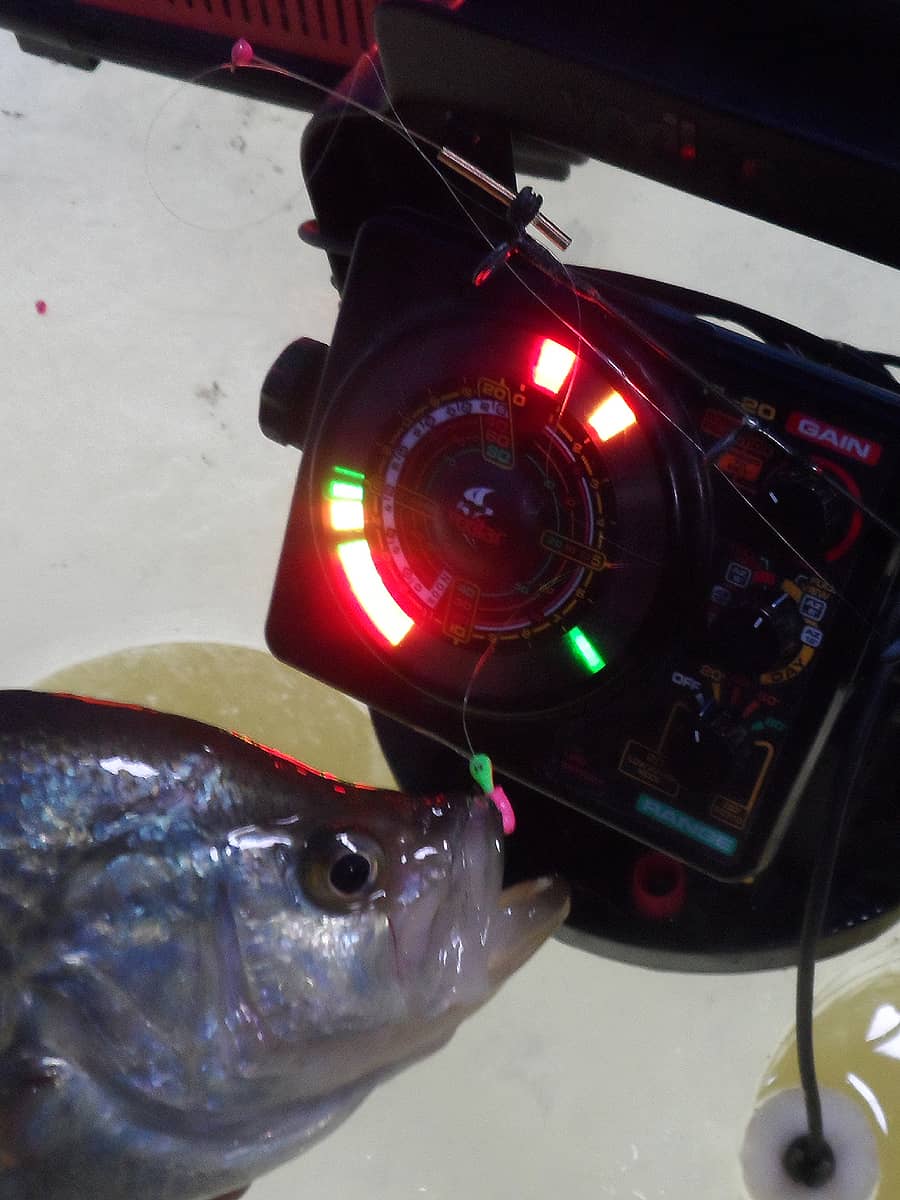
Still Hooked. Downsizing offerings, like jigs and baits, can make a difference and still convert big fish after a tough front rolls through. Think smaller after a cold front and use sonar to locate and keep tabs on lethargic fish. Simonson Photo.
By Nick Simonson
Winter is already the slow time for fish. Due to their cold-blooded nature, they’re generally less energetic and aggressive than they are in summer when water is warmer. That doesn’t mean they’re not biting, and fast action can often be found during stable weather and at peak times, such as dawn and dusk for walleyes, crappies and other fish that feed in low light. However, when roaring winter fronts rip through the region and high winds, snow and inclement weather are followed by cold and sunny conditions, those post-frontal doldrums can kill off even the hottest bite. Should you find your weekend trip following a tough stretch, there are still ways to convert fussy fish even after a front.
Small, Slow & Slight
Think of post-frontal fishing as trying to convince a fish to wake up, move around and eat something after an all-night party. Maybe, think back to your college days. The hangover of sorts for fish resulting from the whipsawing pressure and change in conditions is tough to overcome, but present just the right bait in the right manner, and it can be overcome.
First, utilize smaller baits. Downsize jigs and spoons and use smaller minnows for fish like walleyes and perch, or perhaps switch from waxworms to maggots for crappies. Fish are less likely to snap up a larger fathead, and instead might take better to the smaller minnows in the bait bucket, simply due to the post frontal lethargy. Second, slow things down. Keep jigging movements minimal as fish approach, don’t go ripping spoons like you would when things are stable, some subtle flickering and slight jumps are okay, but generally gauge the fishes’ response as they come in to any attractor rod you may have going. Have a deadstick or bobber rod set in a nearby hole for those neutral fish. With that offering, you can also limit baitfish movements by utilizing an extra split shot or shifting the weight further down the line toward the hook to keep the minnow in place. Finally, downsize line where the species allow for it. Instead of four-pound test for crappies and perch, try two-pound test to keep things looking more natural, don’t make as big of a drop for walleyes or pike, as you may still need the line strength to play the fish successfully.
Deep Thoughts
If you’ve been finding fish feeding up on the shallow side of a point, shift a bit deeper and drill holes out from where the bite has been in the time leading up to the change in the weather. After the front, fish likely will push out into the depths and perhaps only forage on the rise at dusk and dawn, instead of at the top of it. Explore drop-offs and deeper structure after the weather shifts to find those fish seeking refuge from the changes going on above them. Stay focused too on the bottom of your sonar, as species like walleyes and perch will often hug the bottom following a front. Look for flickers or slight shifts on or adjacent to that area on a sonar display that sets the base of the water column and lock that zoom mechanism in to magnify those shifts on the readout. Keep offerings low and set minnows in the mud on those bobber rods to keep baits in front of the fish at the levels they’re cruising at.
In winter a change in the weather is inevitable, and happens on a weekly basis, if not seemingly a daily one. Knowing how to adjust to it will help you catch fish when your time on the ice coincides with tough conditions. Think small, slow and slight and work those depths to find fish following a wicked cold front.
